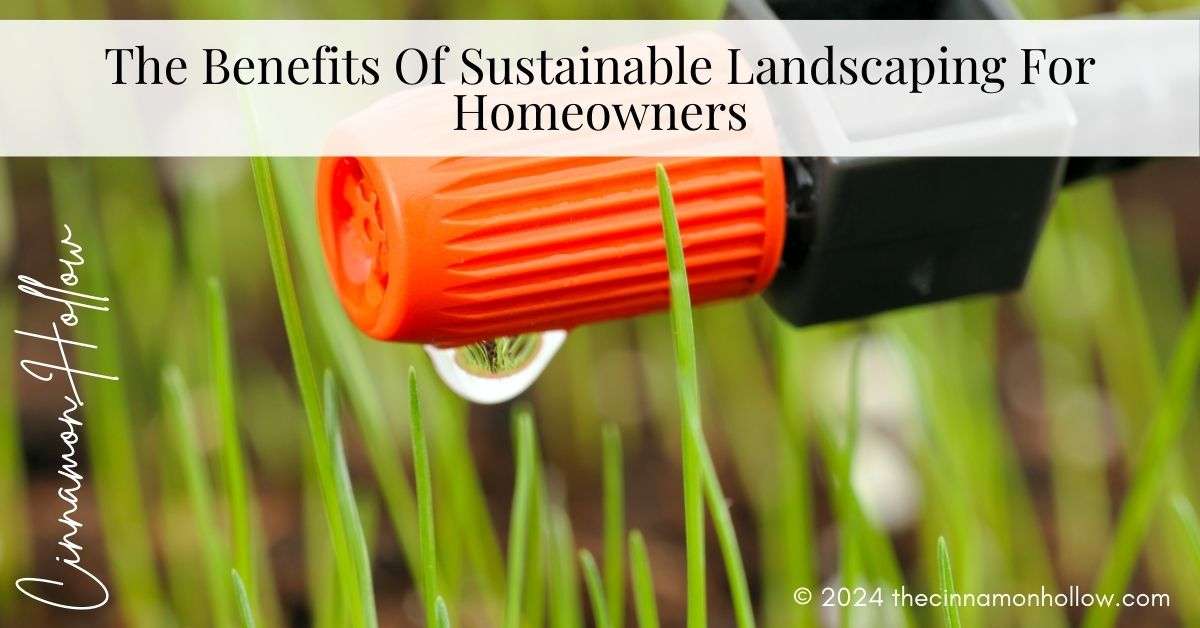What Is Sustainable Landscaping?
Sustainable landscaping is an innovative approach that uses eco-friendly practices to create beautiful, low-maintenance outdoor spaces. This method conserves resources, supports local wildlife, and creates environmentally responsible landscapes. By adopting these practices, homeowners can enjoy lush gardens while significantly reducing their ecological footprint. For more detailed plans and ideas, visit a reliable website dedicated to sustainable landscaping practices.
Sustainable landscaping goes beyond simply planting trees and shrubs. It involves designing and managing landscapes in ways that harmonize with nature. This practice considers water conservation, soil health, and using native plants to create a balanced ecosystem. It’s an excellent choice for homeowners who wish to maintain a beautiful garden without harming the environment.
Benefits Of Sustainable Landscaping
Switching to sustainable landscaping offers a multitude of benefits. First and foremost, it can significantly reduce water usage and garden maintenance costs. Sustainable landscapes are designed to be more resilient to local weather conditions, which means they require less intervention in the form of chemical fertilizers and pesticides. This not only saves money but also contributes to a healthier environment for both plants and wildlife.
There are several specific advantages to adopting sustainable landscaping techniques:
- Lower water bills: Efficient water management systems and drought-resistant plants help conserve water, which can lead to significant savings on water bills.
- Reduced need for fertilizers: Improving soil health and using native plants minimize the necessity for chemical fertilizers.
- Enhanced biodiversity: Sustainable landscapes support a variety of local species, from plants and insects to birds and other wildlife.
- Improved air and soil quality: Native plants and eco-friendly practices help purify the air and improve soil fertility.
Furthermore, sustainable landscaping contributes to the aesthetic value of your property. It creates a visually appealing, unique, harmonious environment, blending seamlessly with the natural surroundings. This holistic approach ensures that every aspect of your landscape works together to create a thriving ecosystem.
Incorporating Native Plants
One of the core principles of sustainable landscaping is using native plants. These species are adapted to the local climate and soil conditions, requiring less water and maintenance. Native plants also provide essential habitat for local wildlife, promoting a healthy ecosystem right in your backyard.
Native plants are naturally suited to the local environment, making them more resistant to pests and diseases. This reduces the need for chemical pesticides, which can harm beneficial insects and other wildlife. Additionally, native plants typically require less fertilizer because they are adapted to thrive in the local soil conditions. This makes gardening more accessible and more cost-effective.
Moreover, planting native species helps preserve the region’s botanical heritage. These plants have evolved over thousands of years alongside local wildlife, forming complex and interdependent relationships. By incorporating native plants into your landscape, you’re beautifying your garden and playing a pivotal role in conserving regional biodiversity.
Efficient Water Management
Efficient irrigation systems and water management techniques are crucial components of sustainable landscaping. Drip irrigation, rain barrels, and intelligent watering systems help conserve water and ensure plants get the proper moisture. Additionally, implementing xeriscaping principles can further reduce water usage in your garden.
Investing in such systems benefits the environment and significantly saves water bills.
Water management also involves selecting drought-tolerant plants and using mulch to retain soil moisture. Implementing rain gardens can capture and filter rainwater, reducing runoff and the need for supplemental watering. These practices collectively contribute to a more sustainable and resilient landscape.
By adopting these water management strategies, homeowners can create gardens that are not only beautiful but also resource-efficient. This approach reduces reliance on municipal water supplies and helps protect local waterways from pollution caused by excessive runoff.
Improving Soil Health
Healthy soil is the foundation of a vibrant and sustainable landscape. Practices such as composting, mulching, and avoiding chemical soil treatments help improve soil structure and fertility. This, in turn, supports plant health and growth while reducing the need for artificial fertilizers.
Maintaining soil health involves regularly assessing soil nutrient levels and making necessary adjustments. Composting organic waste adds valuable nutrients to the soil, promoting healthy microbial activity. Mulching helps retain soil moisture, suppress weeds, and regulate soil temperature.
These practices improve plant health and contribute to a more sustainable garden. Ultimately, healthy soil is the cornerstone of a sustainable landscape. It supports robust plant growth, enhances water retention, and promotes biodiversity. By prioritizing soil health, homeowners can create beautiful and environmentally friendly gardens.
Eco-Friendly Design Ideas
Implementing eco-friendly landscape designs can further enhance sustainability. Consider incorporating features like rain gardens, green roofs, and permeable pavements. These elements add aesthetic value, help manage stormwater runoff, and reduce your property’s carbon footprint.
Rain gardens are designed to capture and filter rainwater, allowing it to soak into the ground rather than run off into storm drains. This helps recharge groundwater supplies and reduces erosion. On the other hand, green roofs provide insulation for buildings and reduce the urban heat island effect by absorbing heat and cooling it.
Permeable pavements allow water to pass through, reducing runoff and promoting groundwater recharge. These materials are ideal for driveways, walkways, and patios. Integrating these eco-friendly design elements into your landscape creates a more sustainable and resilient garden.
Key Takeaways:
- Sustainable landscaping practices can enhance your home’s curb appeal while benefiting the environment.
- Using native plants and efficient irrigation systems can lower maintenance costs.
- Implementing eco-friendly designs promotes biodiversity and reduces your carbon footprint.



[fluentform id="6"]